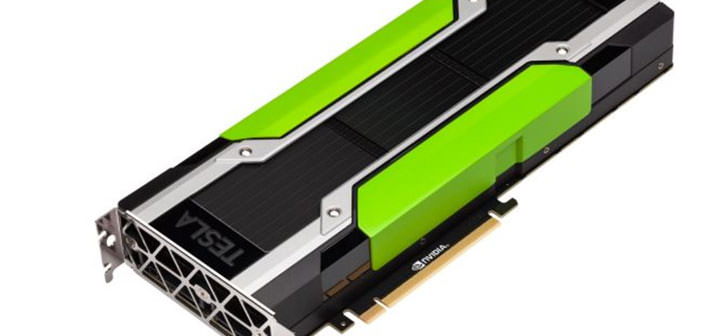Tesla M4 and Tesla M40 are the two new proposals for NVIDIA for the professional market, aimed at the same target but with different technical choices: Tesla M40 focuses on power, while Tesla M4 of size and consumption.
NVIDIA has officially announced two new video cards family Tesla, intended to be used as Hyperscale Accelerators in systems intended for use in the fields of machine learning.
The first model is the one Tesla M40, a solution with GPU GM200 with 3,072 CUDA cores paired with 12 Gbytes of memory GDDR5 clocked actual amount to 7 GHz. These are the same specifications of the GeForce Titan destined to Z desktop systems, with differences only in the clock frequency of the GPU.
The second new card is Tesla M4, the first model in the series Tesla using a form factor card with PCI Express half-height. This solution has been developed to be coupled to server systems of small size, making the most of the overall consumption of up to 75 watts peak. GPU side we find a model GM206 with 1024 CUDA cores, combined with 4 Gbytes of memory GDDR5 with a clock frequency of 5 GHz effective. Both cards feature from using a cooling system completely passive: will the fans be integrated in the server that will allow to ensure proper heat dissipation.
Alongside the two new NVIDIA announced the package ” NVIDIA Hyperscale Suite “, through which allow web services to take advantage quickly and effectively computing power made available by NVIDIA.
Particularly interesting in this regard is a specific version of FFmpeg that supports the engine hardware NVDIIA to encode and decode that can considerably speed up the operations of processing and video transcoding with respect to a structure in the data center consists of just traditional CPUs.
With this two new NVIDIA, Tesla extends the range of proposals, proposing models that are used as a framework of reference systems for machine learning. If Tesla M40 is a card very powerful, strong single-GPU architecture, Tesla M4 for the choice has been to provide a product able to balance adequate computing power with a compact size and many reduced overall levels of consumption.


